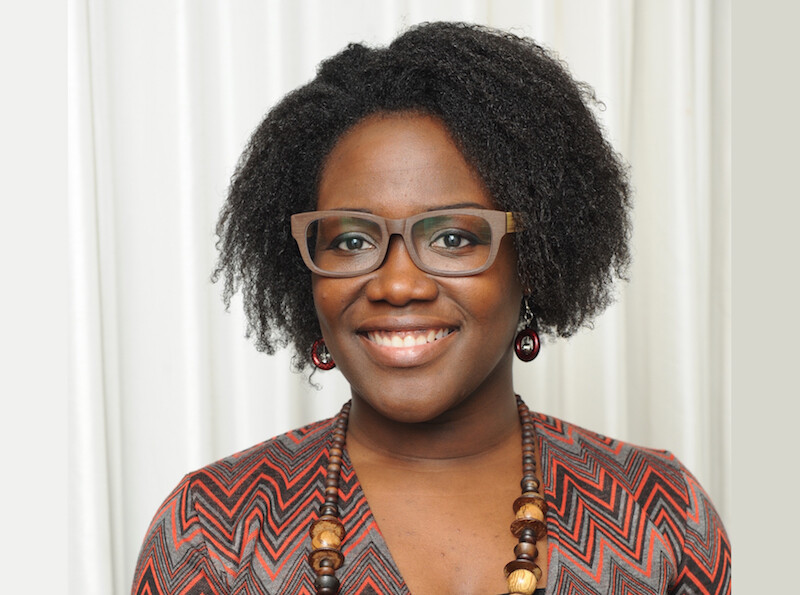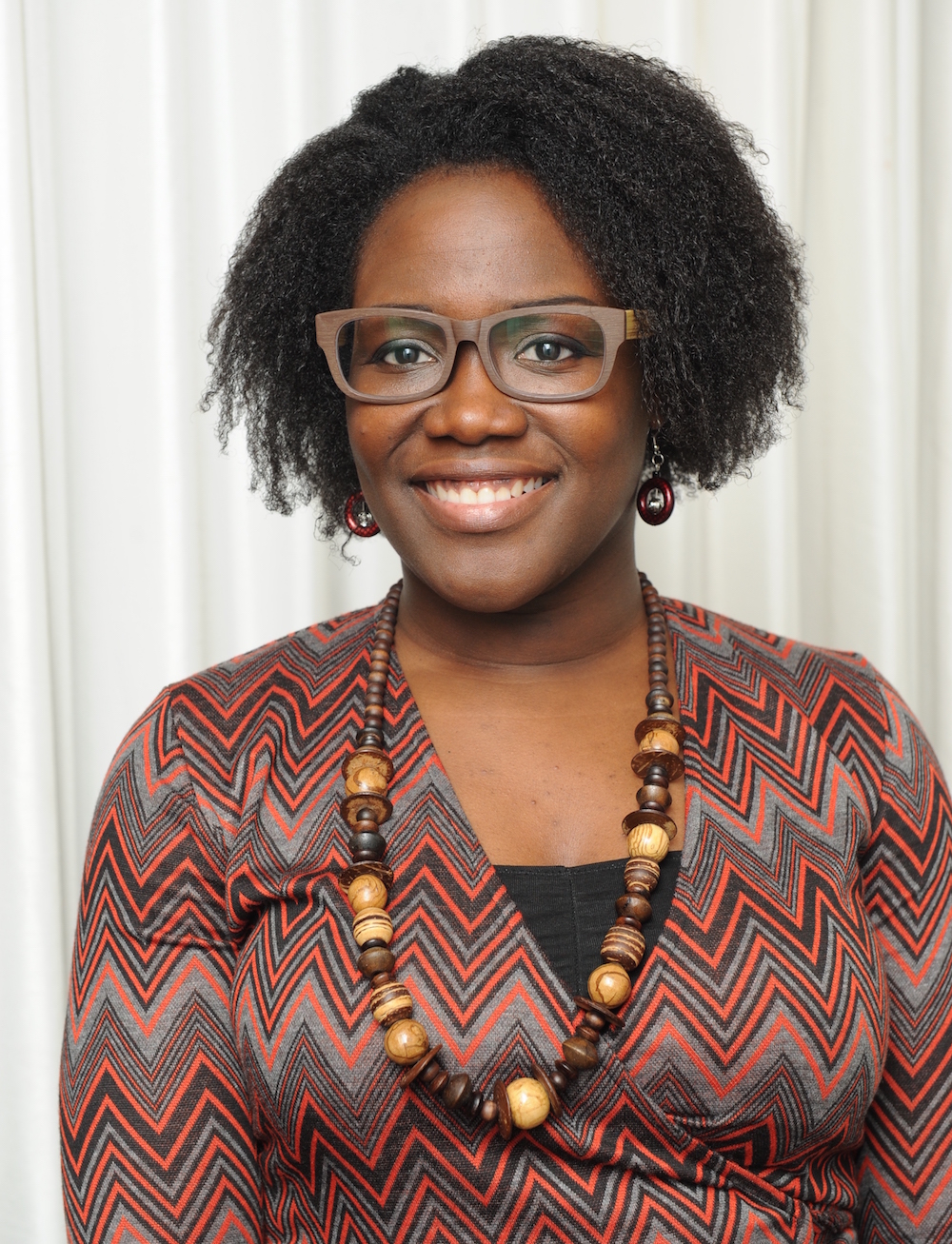Breadcrumbs
- Home
- MD/PhD Program
- News
- Dr. Onye Nnorom works to advance Black health in Canada
Dr. Onye Nnorom works to advance Black health in Canada

 Dr. Onyenyechukwu (Onye) Nnorom began a three-year term as the MD Program Black Health Theme Lead on November 14, 2016. Dr. Nnorom is a Family Doctor and a Public Health & Preventive Medicine specialist. She practices at TAIBU Community Health Centre which has a mandate to serve the Black community in the GTA. She is also the Primary Care Lead for the Central East Regional Cancer Program, and the Associate Program Director of the Public Health & Preventive Medicine Residency Program at the University of Toronto. Being of Nigerian and Trinidadian heritage, she is particularly interested in immigrant health, and Black community health and wellness. Her work is focused on cancer prevention and understanding the impact of race as a driver of health inequities in Canada. We spoke with Dr. Nnorom about her new role and her passion for advancing Black health in Canada.
Dr. Onyenyechukwu (Onye) Nnorom began a three-year term as the MD Program Black Health Theme Lead on November 14, 2016. Dr. Nnorom is a Family Doctor and a Public Health & Preventive Medicine specialist. She practices at TAIBU Community Health Centre which has a mandate to serve the Black community in the GTA. She is also the Primary Care Lead for the Central East Regional Cancer Program, and the Associate Program Director of the Public Health & Preventive Medicine Residency Program at the University of Toronto. Being of Nigerian and Trinidadian heritage, she is particularly interested in immigrant health, and Black community health and wellness. Her work is focused on cancer prevention and understanding the impact of race as a driver of health inequities in Canada. We spoke with Dr. Nnorom about her new role and her passion for advancing Black health in Canada.
Can you tell us about your role as Black Health Theme Lead and what you hope to achieve through this position?
Through my role as the Black Health Theme Lead, I will form an advisory committee comprised of both community members and scholars to inform the design of a Black Canadian Health curriculum for medical students and develop ways to evaluate their knowledge in this area. I’m very excited because, to my knowledge, this will be the first medical curriculum focusing on Black Health in Canada.
Along with leading the development of the curriculum, I’ll also be providing support for medical students, who are Black and non-Black, in understanding the issues surrounding the disparities in Black Canadian health, and how to approach these issues in the hospital or clinical setting.
And finally, the other aspect of my work will be to engage in mentorship and provide recruitment support for students of African ancestry who are interested in applying to medicine. As the Board Chair of the Black Physicians’ Association of Ontario (BPAO), I have been mentoring undergraduate and graduate students who are interested in pursuing medicine (as do most members of the BPAO), but now it will be a formal part of my role at U of T.
When will students experience the new Black Canadian Health curriculum?
We will be integrating the content into the curriculum over time. I already teach a lecture in the Public Health component on race and medicine where I incorporate Black Health. But we’ll begin by integrating curricular components into the second year of the Foundations Curriculum next year. The content will focus on including concrete examples where students can apply their knowledge or understanding of health disparities that affect the Black community in Canada.
We are starting from scratch, so it may take a couple of years to have the full curriculum in place. Over time we’ll look at incorporating Black Health into the clerkship curriculum as well.
Why do you think it’s important to integrate the Black Health perspective into the MD Program curriculum?
It’s important to incorporate the issues that affect diverse communities – not just the Black community – within the curriculum because that’s the population our students will serve, particularly in Toronto. The Black community makes up almost one in 10 people in Toronto. As a medical trainee, if you’re not aware of the health issues that affect the Black Canadian population when you enter the health care system, then you are at risk of providing suboptimal care.
I’m passionate about teaching medical students about the health conditions that disproportionately affect the Black Canadian population. Examples would be diabetes, hypertension and prostate cancer. To really understand some of these issues, students need to, not just understand how a disease might present differently in the Black population, but also some of the reasons that can contribute to disparity.
It’s also important to recognize that a great deal of the information students have access to regarding Black patients comes from the United States. This is problematic because in the United States you have a more homogenous Black population that has been there for generations. By contrast, the Canadian Black population is largely made up of immigrants, and the children of immigrants from several countries, so there is great diversity in the Black Canadian population with regard to genetics, health practices and cultures, which also need to be taken into account in a health care setting.
Students will also need to learn how the social determinants of health – the social factors like education, gender, culture, immigration and particularly, institutionalized racism – can affect health and health behaviours. Having that full picture in a Canadian context is really important for being able to not only help our patients, but also advocate for them as well.
We are very fortunate to have a universal health care system. However, there are certain groups, such as the Black population, that have worse health outcomes for certain diseases, so I think it’s really important for students to understand that those inequities exist, and also the reasons why, so that we can work towards correcting them.
Can you describe the concept of cultural safety and how it applies to teaching students about Black Canadian health?
Aboriginal health professionals and scholars developed the concept of cultural safety, this approach can also be used in understanding other racialized groups like the Black Canadian population, and I am grateful for that.
According to the National Aboriginal Health Organization, cultural safety involves establishing trust with your patient. Culturally safe care encourages open communication and is empowering because it recognizes the value and validity of each person’s knowledge and reality. It goes beyond just having self-awareness – but gets to the heart of understanding and reflecting about how one’s cultural attitudes, beliefs and values inform how one practices medicine. It involves thinking about the patient and where they’re coming from, and understanding that there is a power imbalance in the physician-patient relationship. All for the purpose of trying to create an environment that is safe for that patient.
What are you most looking forward to in your new role?
Having Black health issues recognized and embedded in the curriculum is a huge step. I’m both motivated and enthusiastic about molding this new curriculum, but even more eager to see what the impact will be years from now. I’m looking forward to seeing how our students today might teach this topic in the future, as we collectively have more knowledge about cultural safety for diverse communities, and also more knowledge about the disparities that different communities face.
I think just the fact that this role newly exists is very exciting.
I’m also looking forward to getting the students’ feedback and learning from it to make our curriculum better and better – and more relevant and informative for them.
News


